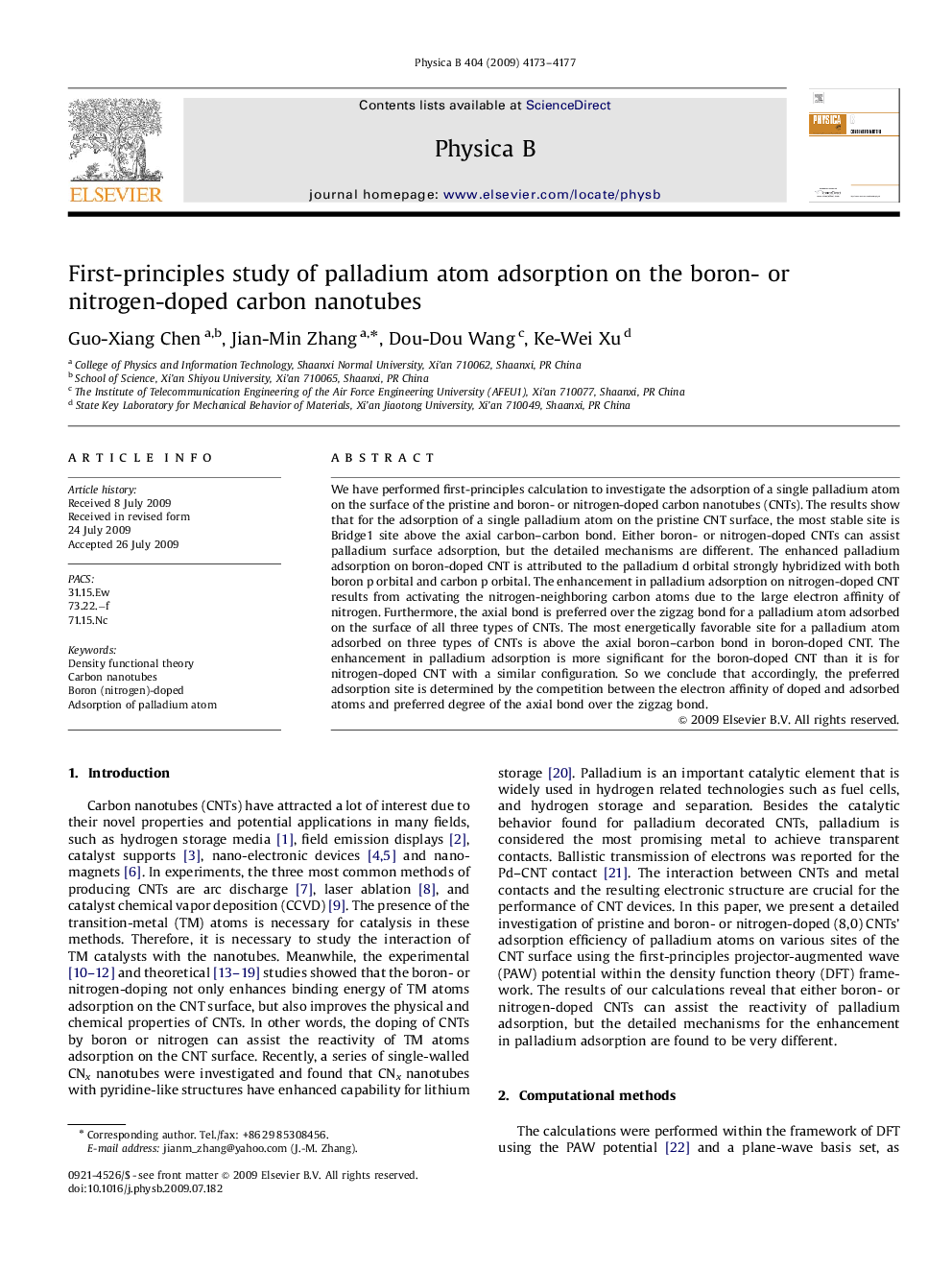| Article ID | Journal | Published Year | Pages | File Type |
|---|---|---|---|---|
| 1813023 | Physica B: Condensed Matter | 2009 | 5 Pages |
Abstract
We have performed first-principles calculation to investigate the adsorption of a single palladium atom on the surface of the pristine and boron- or nitrogen-doped carbon nanotubes (CNTs). The results show that for the adsorption of a single palladium atom on the pristine CNT surface, the most stable site is Bridge1 site above the axial carbon-carbon bond. Either boron- or nitrogen-doped CNTs can assist palladium surface adsorption, but the detailed mechanisms are different. The enhanced palladium adsorption on boron-doped CNT is attributed to the palladium d orbital strongly hybridized with both boron p orbital and carbon p orbital. The enhancement in palladium adsorption on nitrogen-doped CNT results from activating the nitrogen-neighboring carbon atoms due to the large electron affinity of nitrogen. Furthermore, the axial bond is preferred over the zigzag bond for a palladium atom adsorbed on the surface of all three types of CNTs. The most energetically favorable site for a palladium atom adsorbed on three types of CNTs is above the axial boron-carbon bond in boron-doped CNT. The enhancement in palladium adsorption is more significant for the boron-doped CNT than it is for nitrogen-doped CNT with a similar configuration. So we conclude that accordingly, the preferred adsorption site is determined by the competition between the electron affinity of doped and adsorbed atoms and preferred degree of the axial bond over the zigzag bond.
Related Topics
Physical Sciences and Engineering
Physics and Astronomy
Condensed Matter Physics
Authors
Guo-Xiang Chen, Jian-Min Zhang, Dou-Dou Wang, Ke-Wei Xu,
